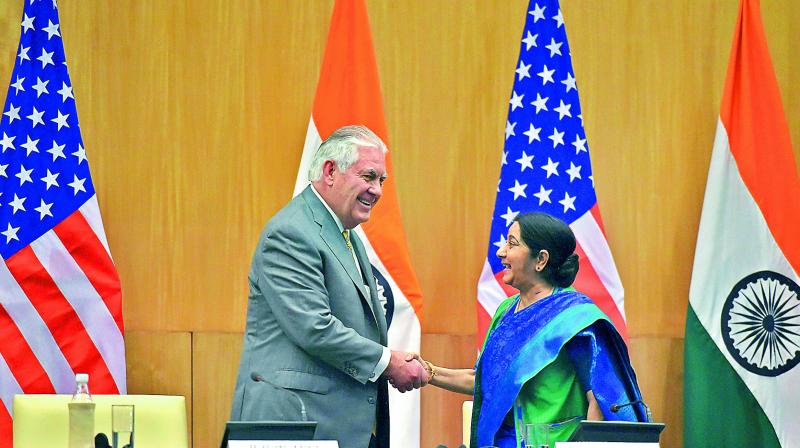India must go its own way on China
The pivot of India's foreign and security policy is the notion of strategic autonomy.

US secretary of state Rex Tillerson dropped by in New Delhi while on a five-nation tour October 20-27, which included Saudi Arabia, Qatar, Pakistan and Switzerland. A month earlier, he had visited China to lay the groundwork for US President Donald Trump’s coming visit. US-China ties have been strained by Mr Trump’s criticism of China’s trade practices and by the demands that Beijing do more about North Korea. A visit by US commerce secretary Wilbur Ross preceded Mr Tillers-on’s visit, where we can presume the only topic discussed would have been the ever-increasing trade gap between the two countries, and the gripes aired by candidate Donald Trump. These clearly highlight the differing perceptions of the US vis-a-vis China and India.
In the run-up to Mr Tillerson’s India visit, the US media made no secret about its purpose. Their view was that as China’s clout in the Asia-Pacific region rises, the US was wooing India into a closer embrace. Indians chaff at the suggestion that China’s growing power is the reason why the US sees value in ties with India. And not because of shared values. India has a certain sense of self-esteem that Americans misunderstand entirely. India doesn’t want its relationship to be dependent on the intensity of Amer-ica’s competition with China. Most Indians recall the long-held US animosity and the convergence of its Cold War interests with China’s, and directed towards India. At that time the US was building China as a power to outflank the former Soviet Union. Most Indians hence don’t miss the irony when, standing beside external affairs minister Sus-hma Swaraj during his maiden visit to South Asia as Mr Tillerson said the US “supports India’s emergence as a leading power”.
India’s external diplomacy is heavily invested in realism, which means it will always be focused on its own immediate and long-term interests. Its non-alignment policy served it well when it was a low-income country with myriad economic problems. Now that it’s a middle-income country with the world’s third largest GDP, about $9.7 trillion (PPP), there’s no reason why it should be the US’ or for that matter anybody else’s junior partner against a third power. Especially one which is also a physical neighbour, and not one separated by a large body of water — like the US, Japan and Australia. India doesn’t see its place in the world like Britain, latched on to Uncle Sam’s coattails.
The US made no bones about what it seeks from India. Said state department spokesperson Heather Nauert: “US and Indian officials discussed strengthening US-India partnerships, India’s leadership on peace and security in the India-Pacific region and India’s role in the administration’s South Asia strategy.” For the foreseeable future, India has few interests beyond the immediate neighbourhood. The region the US state department has suddenly taken to calling India-Pacific spans about half the world. Even if it’s interested, India can’t afford to be a part of the policing arrangement in this huge region. India has a mostly undemarcated 3,488-km border with China. The fact that both countries haven’t even agreed on military border, otherwise called the Line of Actual Control (LAC), compounds the dispute. So by tacit agreement, later ratified by the Border Defence Cooperation Agreement 2013, India and China undertake patrolling up to their LACs without confronting each other, not tailing each other’s patrols. The Doklam standoff took place as India perceived that a Chin-ese road even up to its own LAC would alter the local military balance. Both nations have kept this border peaceful, and not a single shot has been fired at each other since 1967.
However peaceful the border may have actually been, it is not without tension. About half a million troops and powerful air forces face each other and are at trigger’s edge. India has no illusions about who will bear the burden and pay the price. India is also aware that Japan and the US are China’s biggest trading partners and extra-regional investors. The economic inter-linkages between the three are well understood and, by and large, India knows that these relationships are much too deep to sustain another cold war. India didn’t take sides even in that Cold War. There is no reason why it should take sides in a future one. The pivot of India’s foreign and security policy is the notion of strategic autonomy. This simply means it will act upon its own perceived interests and fight its own battles.

